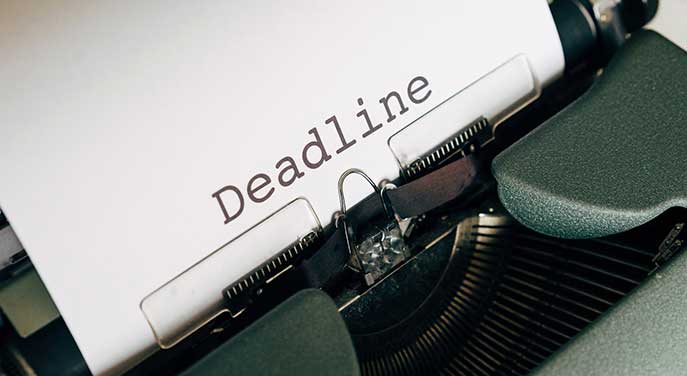 “I’m on deadline!” the harried journalist yells. This is a euphemism for “I’m very busy.”
“I’m on deadline!” the harried journalist yells. This is a euphemism for “I’m very busy.”
There were also literal deadlines.
An old-fashioned newspaper went “to bed” because the printing press was bolted to the floor on what was called the “bed.” The presses started running in time to get the newspaper out the door. It took earth-shattering news to yell “stop the presses.”
A competent PR person would know the deadlines of a morning or afternoon newspaper and decide how quickly to respond. Radio reporters had to file their reports in time for recording and editing – 10 minutes before the newscast. The newsreader had to be in the studio five minutes before the newscast. In TV, editing, picking visuals, lining up stories, and timing to the second pushed deadlines to at least a half-hour before airtime.
Today, deadlines are all the time. All media are all media. Radio and TV have websites that look like newspapers. Newspapers have audio and video content on the web that looks and sounds like radio and TV.
 |
| Related Stories |
| Social media flexes its censorship muscles
|
| Social media is fully weaponized, open discourse be damned
|
| Social media drives a wedge in democracy |
I’ve sent an email to a leading national newspaper reporter and seen the story appear in the online edition in minutes. There’s no editor or even a second thought by the reporter.
Then there’s social media. I was handling a school sexual abuse case a while back, and I was reminded by the head of the school that most of the affected class was on social media and the story might go around the world instantly any minute. So, I was managing a crisis with no little buffer of time between the story going public and reporters calling.
This all leads to research by Annelie Schmittel and Kevin Hull, published in the Journal of Sports Media. They studied alleged bullying by Richie Incognito of the Miami Dolphins. Their work reveals the emerging principles of old vs new media response to a reputational attack. On Twitter, strategies include “victimization, stonewalling, and attacking the accuser.” Exposing critics is emerging as a tactic to discredit them or shift the focus of the story.
In old or traditional media, the techniques are: “shifting blame, good intentions, and bolstering.” You can imagine the discourse – I’m the real victim, my victim deserved it, everybody does this, I was just ribbing a buddy, and I’m really a good guy who does charitable work. There are sub-themes such as this was “all provoked by someone else … an accident … has a smaller impact than suggested … offering compensation …” and so on.
So what do we really know about crisis response with social media and no deadlines? Web 2.0 allows for “complete control over messages.” Even getting instantly harassed on Twitter can build sympathy for the perpetrator. Famous people have lots of followers, and using a hashtag and obtaining re-Tweets can create a wave of support for the perpetrator.
All the players – victims, perpetrators, fans, and journalists are all acting and reacting instantly and in real-time in all media.
Allan Bonner was the first North American to be awarded an MSc in Risk, Crisis, and Disaster Management. He trained in England and has worked in the field on five continents for 35 years. His latest book is Emergency! – a monograph with 13 other authors on the many crises that occurred during the pandemic.
For interview requests, click here.
The opinions expressed by our columnists and contributors are theirs alone and do not inherently or expressly reflect the views of our publication.
© Troy Media
Troy Media is an editorial content provider to media outlets and its own hosted community news outlets across Canada.


